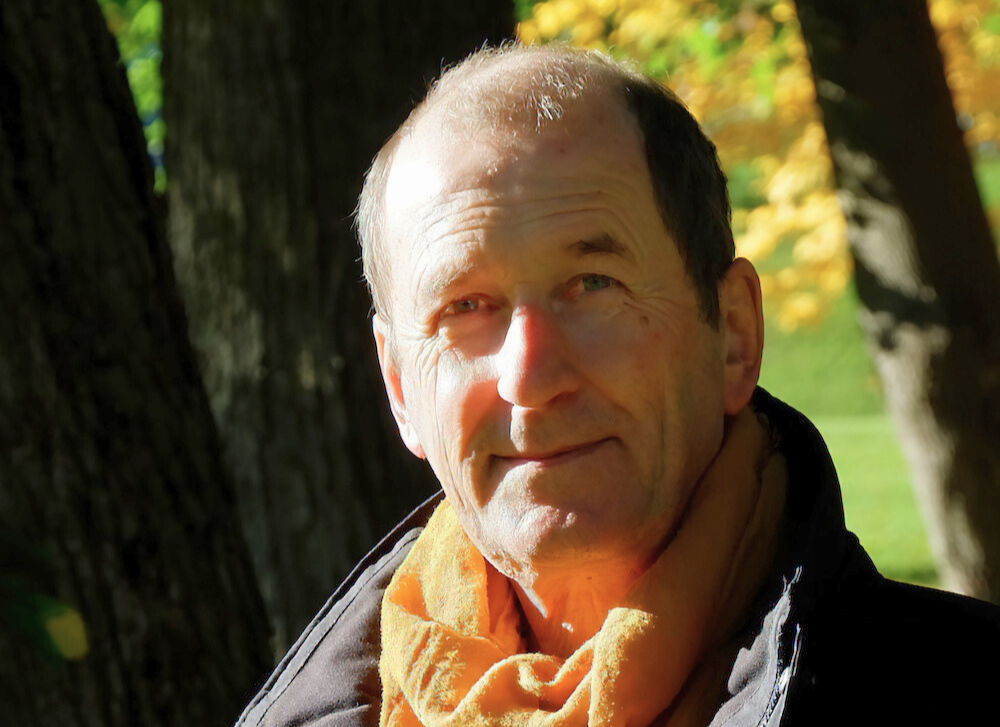The man who breathes chlorophyll
The year the Beatles recorded Lucy in the Sky with Diamond s at the Abbey Road studios, Claude Vallée had a revelation in Boucherville. Installed at the living room window of his parents' modest 4 ½, the little five-year-old discovered the diamonds that the sun's rays formed on the petals of his mother's African violet. By his own admission, it was from this precise moment that he developed a fascination with plants. Chlorophyll began to flow through his veins and his thirst for learning rose like sap during sugaring times.
Holder of a master's degree in plant biology from Laval University, the agronomist has put down roots in the Institute of Agro-Food Technology of Quebec (ITAQ) . Today a development and continuing education advisor in the field of sustainable, urban agriculture and environmental and nourishing ornamental horticulture, Claude Vallée will have sown seeds on the fly during his 22 years at ITAQ.
Creator of “ Les Exceptionnelles ”, this program for selecting the best annuals and vegetable plants, Claude is obviously sensitive to the richness and beauty of the cultivars which decorate homes and gardens. That said, this son of a machinist nevertheless spared no effort to change the strictly decorative concept that most people associate with ornamental horticulture. He is keen that we see these plants as much for the benefits they have on the environment and health. It is not by chance that Claude was the instigator of the eco-responsible horticultural pavilion on the Saint-Hyacinthe campus around ten years ago.
“ We wanted plants to be incorporated for the energy performance they provide to buildings. Green roofs and green walls make it possible to better manage rainwater, absorb dust, improve air quality and lower temperatures. In addition, plants have a positive impact on the Mental Health . »
Fan of “ The Vertical Forest ”, this complex of two Milanese skyscrapers designed by the architect Stefano Boeri with the help of horticulturists and botanists , Claude believes that it is essential that new projects integrate the use of chlorophyll from the first moments of design. The recipient of the Henry Teuscher Prize (2015) for his exceptional contribution to the advancement of Quebec horticulture, it is difficult to explain why even climbing plants — the simplest element there is — are so underused for green walls. Especially since current knowledge demonstrates beyond any doubt that cities must be greened.
At 61, the father of four is not one to give up. Author of more than a hundred technical popularization articles in professional magazines and co-author of three publications, Claude is convinced that the enriched teaching given at ITAQ will bear fruit. He counts on Succession to help accelerate the adaptations that absolutely must occur to face the current challenge of climatic changes .
Furthermore, his green thumb did not only serve him to recommend the design of green buildings . Due to his expertise in technological innovation in the fields of horticultural production and phytotechnologies, he is concerned with soil conservation and waterways through plants.
In his quest for sustainable agriculture, he advocates the use of all areas of agricultural land to promote biodiversity which will help us in our pest control efforts, or even to revalorize industrial waste. It will come as no surprise that he is an associate professor at Biopterre , this bioproduct development center which has just announced that the microscopic marine fungi that one of its teams discovered in the St. Lawrence River could, among other things, be used to protect agricultural crops.
Claude's devotion to plants is such that we even wonder if it would not have influenced his decision to take up residence in Sainte-Rosalie. After all, in Latin, the term “rosalis” means “pertaining to roses”! This is what we call having consistency in ideas.






